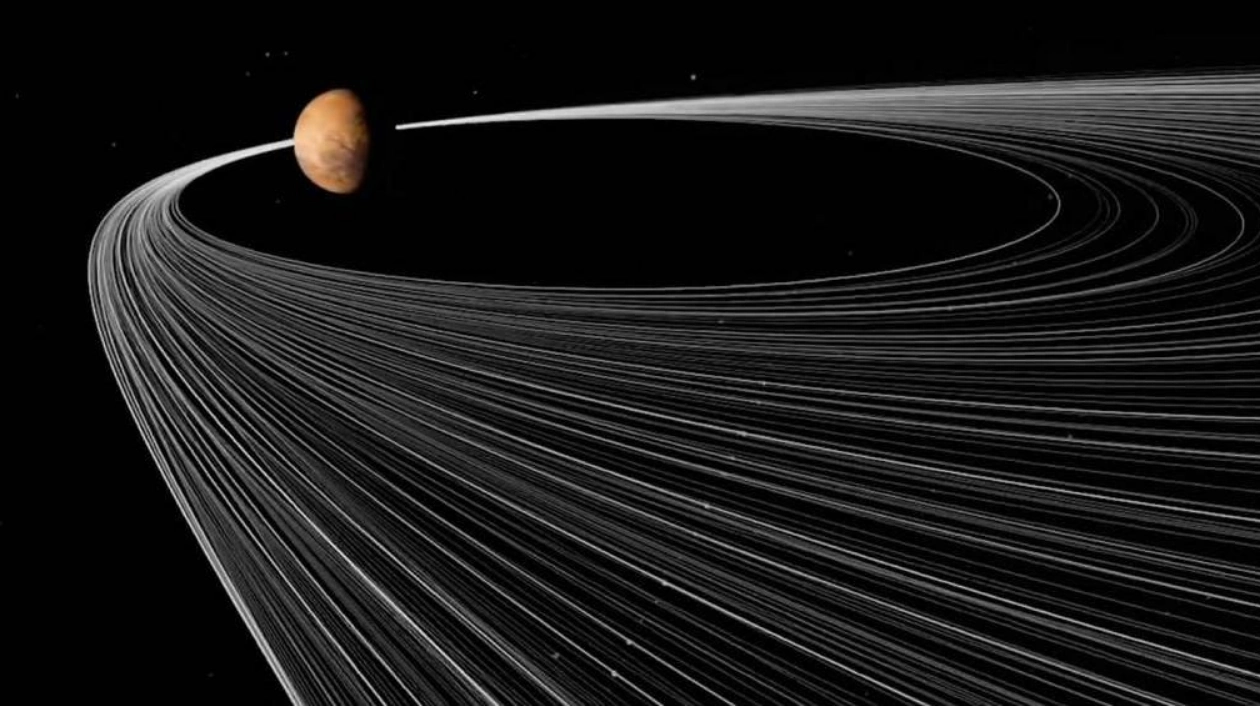Mars' moons might be the remnants of a doomed asteroid that ventured too close to the Red Planet. A shattered asteroid origin could shed light on the enigmatic features of Mars' small, oddly shaped moons, scientists propose in the January issue of Icarus. Unlike most moons, which are large and spherical, Mars' Phobos and Deimos are small and potato-shaped.
There are two primary theories about how these moons formed. One suggests that the moons were asteroids captured by Mars' gravity. However, this theory fails to explain their circular, stable orbits around Mars' equator. The other theory posits that Phobos and Deimos formed similarly to our moon, from the debris of a colossal impact.
Planetary scientist Jacob Kegerreis at NASA's Ames Research Center in Mountain View, Calif., and his colleagues propose an intermediate scenario: Perhaps Mars did capture an asteroid, but the planet's gravity tore the rock apart. The remnants could have formed a transient ring around Mars, from which the potato-shaped moons could have emerged, already in circular orbits.
To test this idea, Kegerreis and his team conducted hundreds of computer simulations of asteroids on a close approach to Mars. Different asteroid sizes, speeds, and spins significantly influenced how the rings formed, but rings did indeed form. Kegerreis notes that across a range of conditions, a substantial amount of material capable of forming a disk was consistently produced.
An upcoming mission may help determine which theory is correct. The Japanese space agency's Mars Moons Exploration mission is slated to launch in 2026, with plans to collect surface material from Phobos and return it to Earth. If the samples are compositionally similar to Mars, it would support the giant impact hypothesis. Conversely, if they are more akin to an asteroid or contain more water and other compounds that would evaporate in the heat of an impact, the shredded asteroid hypothesis gains credibility.
Studying these moons could also provide insights into moons around extrasolar planets. Kegerreis suggests that even if this isn't how Mars' moons formed, it could be a mechanism for moon formation around other planets. With the discovery of numerous exoplanets and potentially exomoons, exploring how these processes occur in different solar systems is increasingly valuable.
Source link: https://www.sciencenews.org






